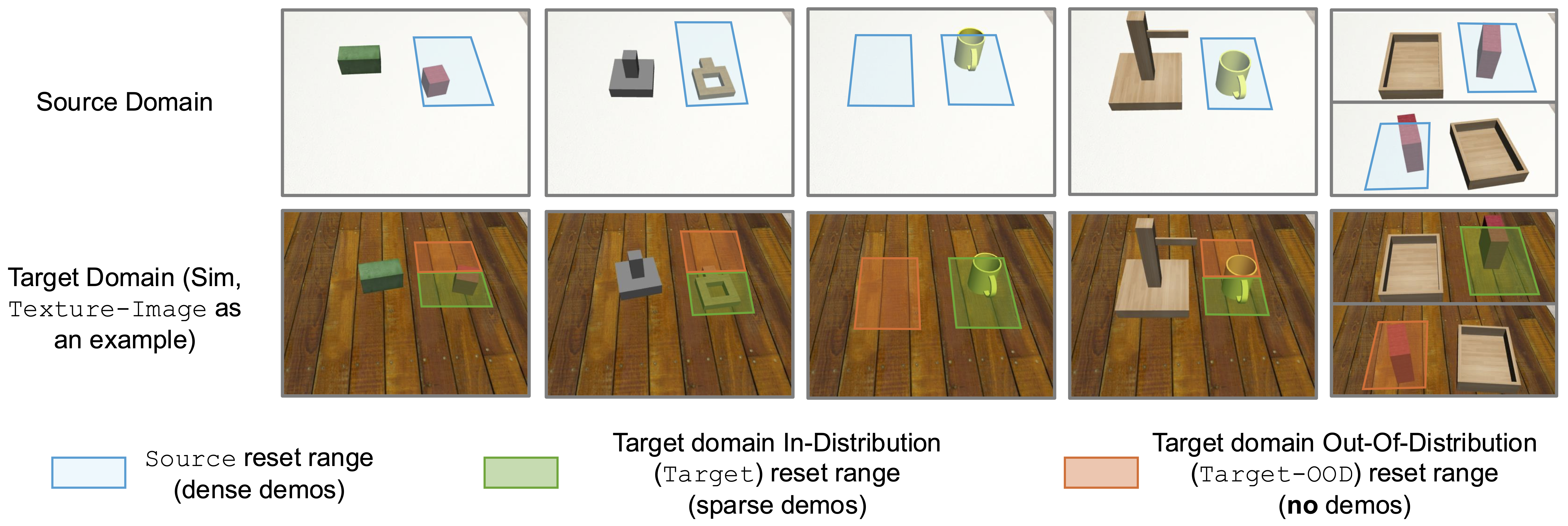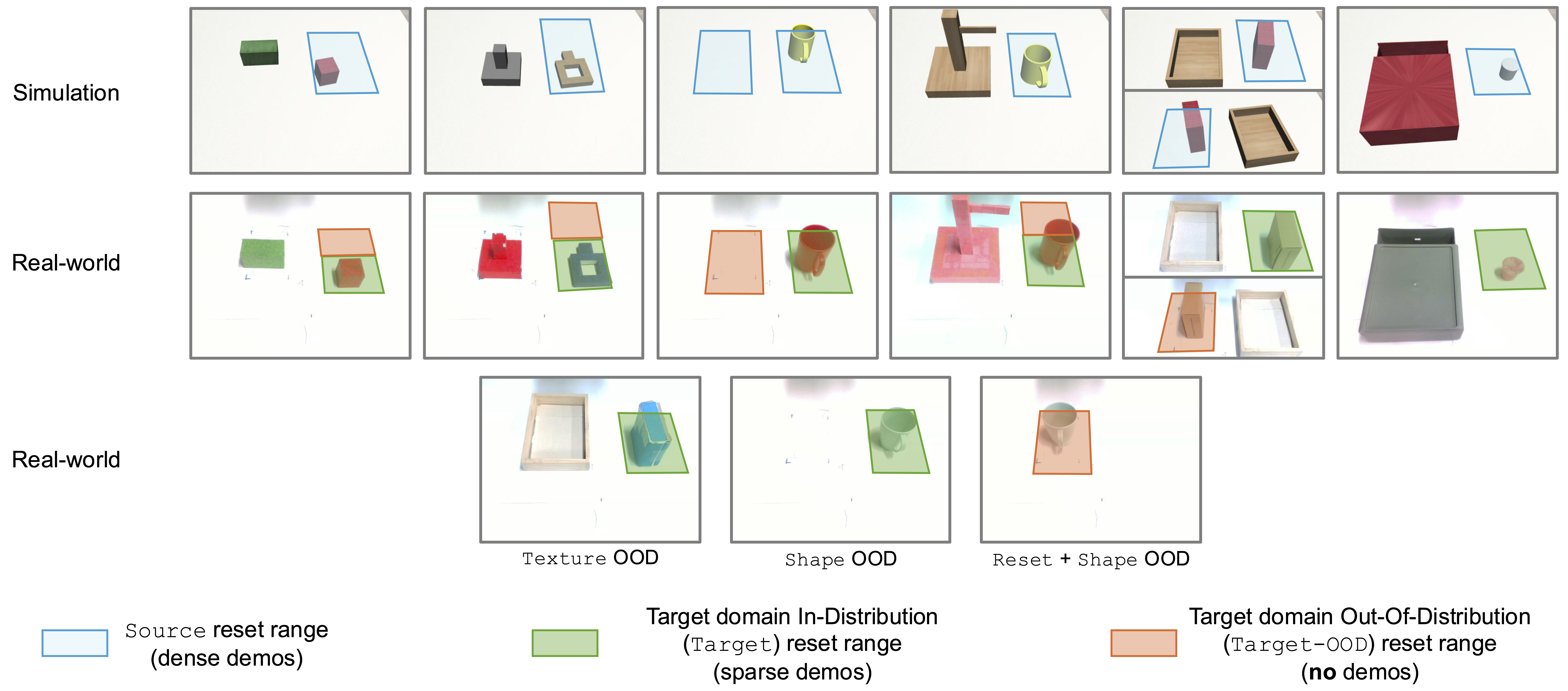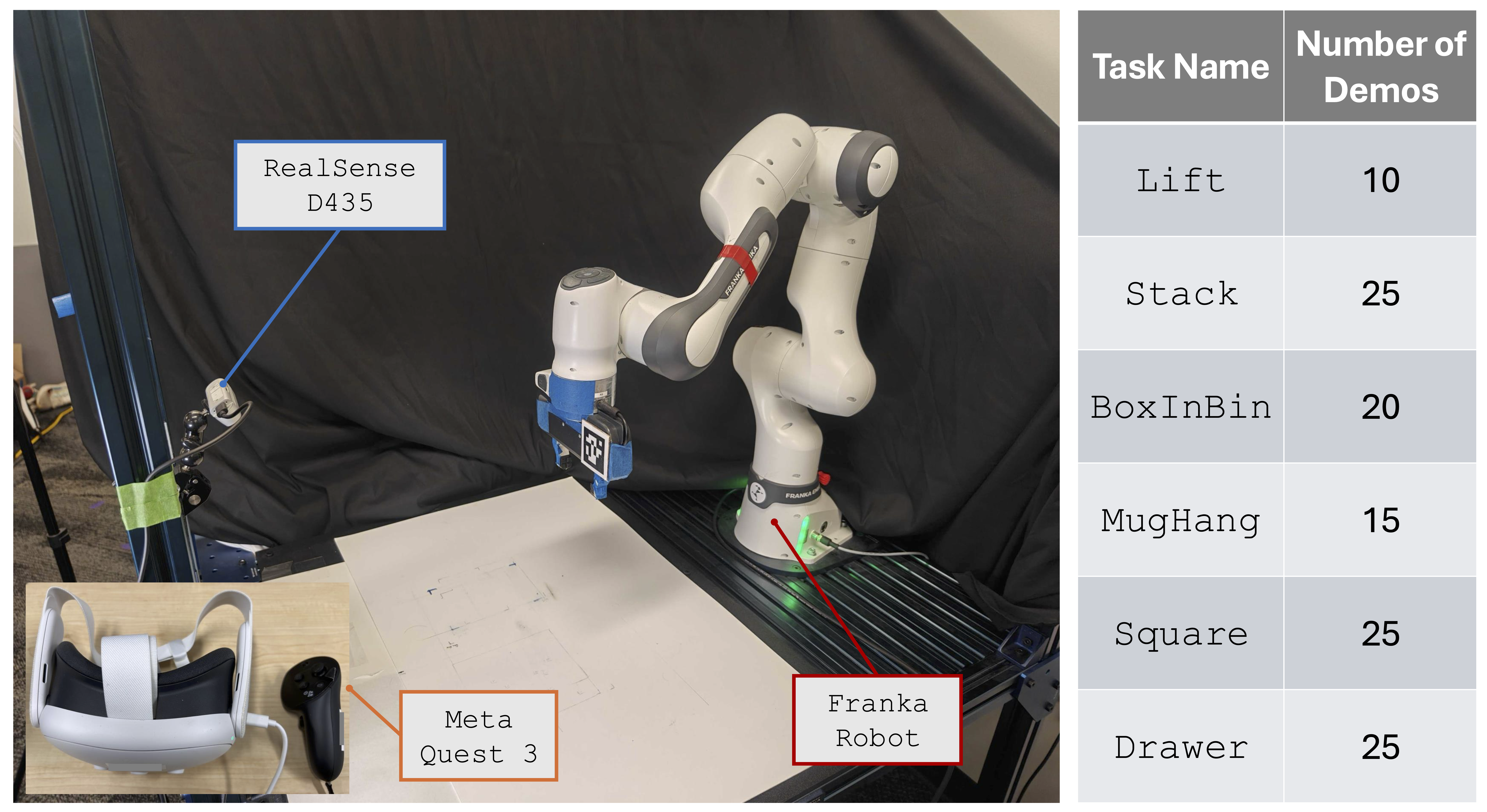Abstract
Behavior cloning has shown promise for robot manipulation, but real-world demonstrations are costly to acquire at scale. While simulated data offers a scalable alternative, particularly with advances in automated demonstration generation, transferring policies to the real world is hampered by various simulation and real domain gaps. In this work, we propose a unified sim-and-real co-training framework for learning generalizable manipulation policies that primarily leverages simulation and only requires a few real-world demonstrations. Central to our approach is learning a domain-invariant, task-relevant feature space. Our key insight is that aligning the joint distributions of observations and their corresponding actions across domains provides a richer signal than aligning observations (marginals) alone. We achieve this by embedding an Optimal Transport (OT)-inspired loss within the co-training framework, and extend this to an Unbalanced OT framework to handle the imbalance between abundant simulation data and limited real-world examples. We validate our method on challenging manipulation tasks, showing it can leverage abundant simulation data to achieve up to a 30% improvement in the real-world success rate and even generalize to scenarios seen only in simulation.
Simulation Experiments
Simulation Task Setups: For
each task, we generate 1000 demos in Source domain reset region and only 10 demos in Target domain
In-Distribution (ID) reset region.

Our method learns complex
manipulation tasks under significant domain shifts using fewer than 10 demonstrations from the target domains.
Ours: 0.77
Co-training: 0.73
MMD: 0.54
Target-only: 0.51
Ours: 0.80
Co-training: 0.70
MMD: 0.46
Target-only: 0.44
Our method is compatible with
both image and point cloud observation modalities.
Ours: 0.68
Co-training: 0.62
MMD: 0.46
Target-only: 0.38
Our method generalizes more
effectively to Out-Of-Distribution (OOD) scenarios in target domains.
Ours: 0.63
Co-training: 0.51
MMD: 0.48
Target-only: 0.00
Ours: 0.11
Co-training: 0.06
MMD: 0.07
Target-only: 0.00
Ours: 0.59
Co-training: 0.47
MMD: 0.40
Target-only: 0.00
Real-world Experiments
Real Task Setups: We collect
10–25 demos per task in real world In-Distribution (ID) reset region, varying with task difficulty. Besides
evaluation on reset range OOD, we additionally test shape and texture OOD scenarios.

Real Data Collection: Our
hardware platform uses a Franka Emika Panda robot, with an Intel RealSense D435 camera for capturing image
and depth, and a Meta Quest 3 headset for teleoperation.

Demo Visualization: We display
the first frames of collected demos to illustrate the task setup and data distribution.
Ours rollouts for
In-Distribution (ID) and Out-Of-Distribution (OOD) evaluation
Co-training baseline failure modes
for Out-Of-Distribution (OOD) evaluation
BibTeX
@inproceedings{
cheng2025generalizable,
title={Generalizable Domain Adaptation for Sim-and-Real Policy Co-Training},
author={Shuo Cheng and Liqian Ma and Zhenyang Chen and Ajay Mandlekar and Caelan Reed Garrett and Danfei Xu},
booktitle={The Thirty-ninth Annual Conference on Neural Information Processing Systems},
year={2025}
}